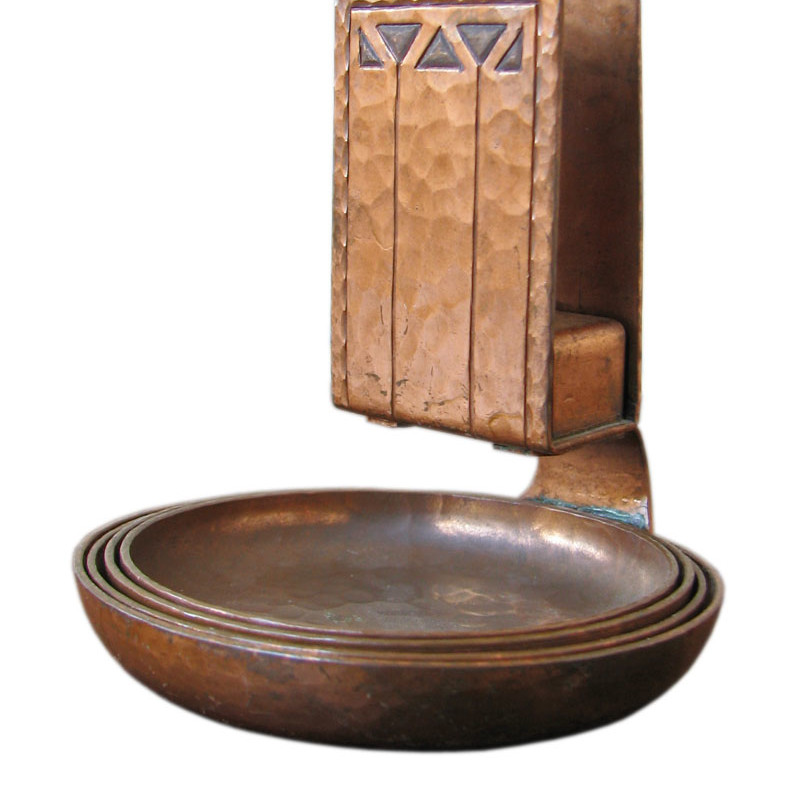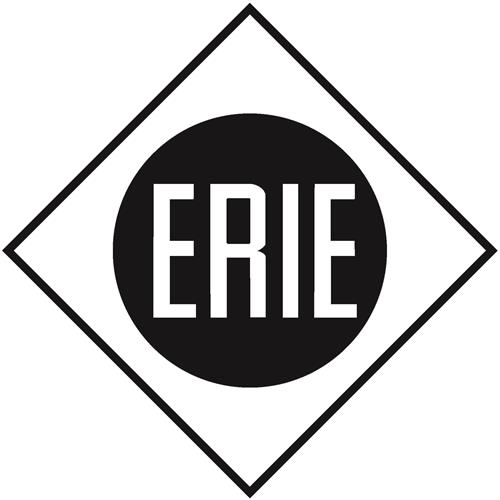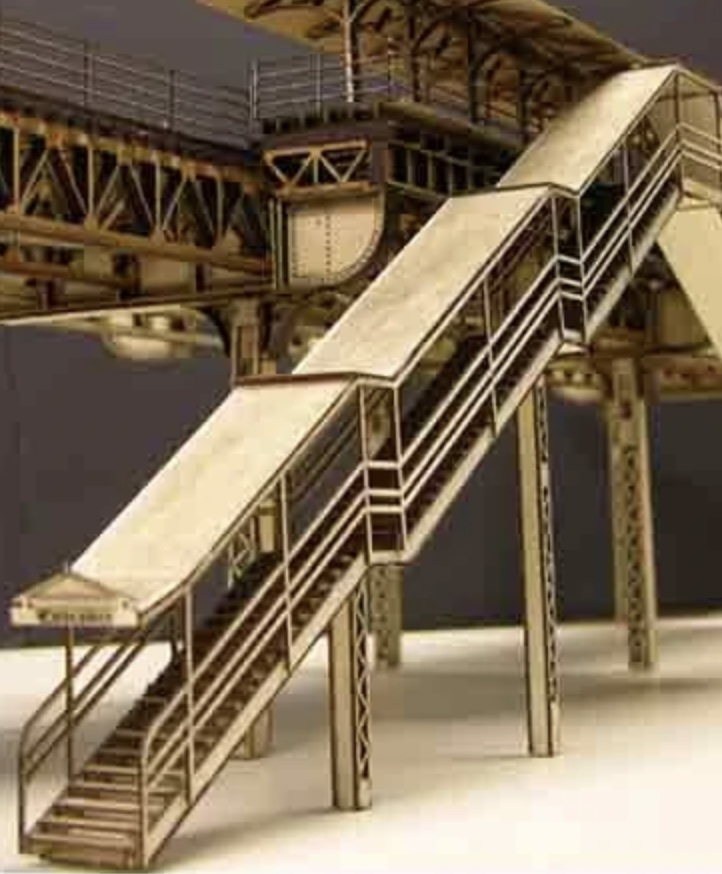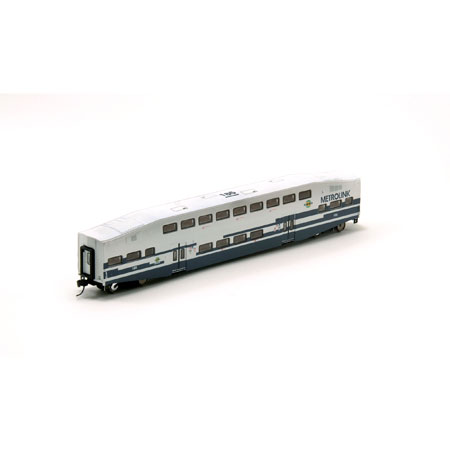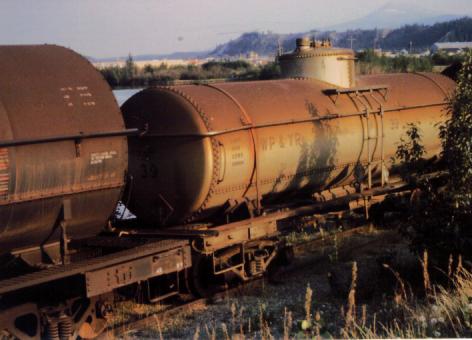Specific Item Information: Only available as part of 3-Pack: NSE MTL 13-84.
Model Information: Micro-Trains first released this model in 2006. It is a model of the Evans three bay covered hopper which was first built in 1966. This tooling has been used to model both Evans 4750 and 4780 prototypes.
Prototype History: Single Dome tank cars are a railroad staple. They have been around since the first half of the 20th century. This length car can handle about 10,000 gallons. These railcars carry a wide array of commodities, including liquid fertilizers, chemicals, fuel oils and asphalt, and food-grade oils. Tank cars can be pressurized or non-pressurized, insulated or non-insulated. Single dome cars carry only a single commodity at once. Food-service tank cars may be lined with stainless steel, glass, or plastic. Tank cars carrying dangerous goods are generally made of different types of steel, depending on the intended cargo and operating pressure. They may also be lined with rubber or coated with specialized coatings for tank protection or product purity purpose. The tank heads are also stronger to prevent ruptures during accidents.
One common version is the ACF Type 27 jacketed tank car with expansion dome which was in common use by many railroads and oil companies.
One common version is the ACF Type 27 jacketed tank car with expansion dome which was in common use by many railroads and oil companies.
Road Name History: Before the natural gas pipe lines crisscrossed the country, gas was generated in places with no natural gas. In Milwaukee, in 1906, the Milwaukee Coke and Gas Co. built a large plant on the south east side of Milwaukee between the C&NW mainline and the Milwaukee harbor. It started near Washington Street and ended near Greenfield Avenue. It was state of the art, and used electric traction for inplant operations.
Coal was brought in by boat and by rail and lifted to the top of the tipple. It was then dropped into an extremely wide gauge electric rail car which ran on the top level and took power by trolley from the wire at the front edge. The coal was then dropped into ovens where it was heated to a high temperature in a low oxygen atmosphere. The carbon reacted with the oxygen to produce carbon monoxide, or coal gas. There were also other smaller amounts of gasses trapped in the coal. The gases were collected and sent to storage tanks. The resulting hot carbon was then pushed out the front door of the oven into a hopper car and sent to a quenching tower. This produced coke. It was a very spectacular sight to see the hot coke dumped out and then to see the clouds of steam from the top of the quenching tower. Originally the hoppers were self propelled cars, seven of them, with small cabs on the end. In 1931, the trucks and controls were used to build 3 steeple cab locomotives which then were coupled to a hopper by a drawbar. The locomotives used a bow trolley on the north end of the line which had overhead. The south end, by the ovens and tower, used an overrunning covered third rail.
Milwaukee Coke and Gas Co became Milwaukee Solvay Coke Co. in 1942 and later became the Milwaukee Coke Division of Manganese Chemical Corp.
Coal was brought in by boat and by rail and lifted to the top of the tipple. It was then dropped into an extremely wide gauge electric rail car which ran on the top level and took power by trolley from the wire at the front edge. The coal was then dropped into ovens where it was heated to a high temperature in a low oxygen atmosphere. The carbon reacted with the oxygen to produce carbon monoxide, or coal gas. There were also other smaller amounts of gasses trapped in the coal. The gases were collected and sent to storage tanks. The resulting hot carbon was then pushed out the front door of the oven into a hopper car and sent to a quenching tower. This produced coke. It was a very spectacular sight to see the hot coke dumped out and then to see the clouds of steam from the top of the quenching tower. Originally the hoppers were self propelled cars, seven of them, with small cabs on the end. In 1931, the trucks and controls were used to build 3 steeple cab locomotives which then were coupled to a hopper by a drawbar. The locomotives used a bow trolley on the north end of the line which had overhead. The south end, by the ovens and tower, used an overrunning covered third rail.
Milwaukee Coke and Gas Co became Milwaukee Solvay Coke Co. in 1942 and later became the Milwaukee Coke Division of Manganese Chemical Corp.
Brand/Importer Information: Micro-Trains is the brand name used by both Kadee Quality Products and Micro-Trains Line. For a history of the relationship between the brand and the two companies, please consult our Micro-Trains Collector's Guide.
Manufacturer Information:  Micro-Trains Line split off from Kadee Quality Products in 1990. Kadee Quality Products originally got involved in N-Scale by producing a scaled-down version of their successful HO Magne-Matic knuckle coupler system. This coupler was superior to the ubiquitous 'Rapido' style coupler due to two primary factors: superior realistic appearance and the ability to automatically uncouple when stopped over a magnet embedded in a section of track. The success of these couplers in N-Scale quickly translated to the production of trucks, wheels and in 1972 a release of ready-to-run box cars.
Micro-Trains Line split off from Kadee Quality Products in 1990. Kadee Quality Products originally got involved in N-Scale by producing a scaled-down version of their successful HO Magne-Matic knuckle coupler system. This coupler was superior to the ubiquitous 'Rapido' style coupler due to two primary factors: superior realistic appearance and the ability to automatically uncouple when stopped over a magnet embedded in a section of track. The success of these couplers in N-Scale quickly translated to the production of trucks, wheels and in 1972 a release of ready-to-run box cars.
Micro-Trains Line Co. split off from Kadee in 1990 to form a completely independent company. For this reason, products from this company can appear with labels from both enterprises. Due to the nature of production idiosyncrasies and various random factors, the rolling stock from Micro-Trains can have all sorts of interesting variations in both their packaging as well as the products themselves. When acquiring an MTL product it is very important to understand these important production variations that can greatly enhance (or decrease) the value of your purchase.
Please consult our Micro-Trains Collector's Guide

Micro-Trains Line Co. split off from Kadee in 1990 to form a completely independent company. For this reason, products from this company can appear with labels from both enterprises. Due to the nature of production idiosyncrasies and various random factors, the rolling stock from Micro-Trains can have all sorts of interesting variations in both their packaging as well as the products themselves. When acquiring an MTL product it is very important to understand these important production variations that can greatly enhance (or decrease) the value of your purchase.
Please consult our Micro-Trains Collector's Guide
Commissioner Information: 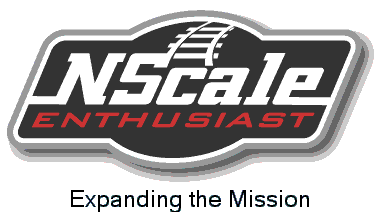 The N Scale Enthusiast Society (previously known as The N Scale Collector until 2011) was established by Wick Brandon, as a sole proprietorship and was a stand alone company until Wick passed away in 2000. The company has been owned by Micro Trains Line since then.
The N Scale Enthusiast Society (previously known as The N Scale Collector until 2011) was established by Wick Brandon, as a sole proprietorship and was a stand alone company until Wick passed away in 2000. The company has been owned by Micro Trains Line since then.
Wick was the founder of TexNRails and he established NSE right after he sold the pioneering N Scale retailer to the Herz family, and the store moved to Florida. Wick and Lea moved their family from Texas to Bakersfield California, and the entire operation was run from his home in Bakersfield. George Johnsen, the current Chairman, came on board as Associate Editor starting with the third issue of the magazine, and the growth of the organization hasn’t stopped. Wick and George did the first convention in Medford in 1993, and added staff and advisors as the organization grew. Wick held the first auction for the NSE in 1995.
The NSE mission statement reads: “This organization is dedicated to the preservation of the history of N Scale Model Railroading, and the railroads they represent.”
They do:
- Special Run Cars
- Regular Auctions of "collectable" Cars
- Annual Conventions
- Bi-Monthly Magazine
Wick was the founder of TexNRails and he established NSE right after he sold the pioneering N Scale retailer to the Herz family, and the store moved to Florida. Wick and Lea moved their family from Texas to Bakersfield California, and the entire operation was run from his home in Bakersfield. George Johnsen, the current Chairman, came on board as Associate Editor starting with the third issue of the magazine, and the growth of the organization hasn’t stopped. Wick and George did the first convention in Medford in 1993, and added staff and advisors as the organization grew. Wick held the first auction for the NSE in 1995.
The NSE mission statement reads: “This organization is dedicated to the preservation of the history of N Scale Model Railroading, and the railroads they represent.”
They do:
- Special Run Cars
- Regular Auctions of "collectable" Cars
- Annual Conventions
- Bi-Monthly Magazine
Item created by: gdm on 2020-11-26 10:41:46
If you see errors or missing data in this entry, please feel free to log in and edit it. Anyone with a Gmail account can log in instantly.
If you see errors or missing data in this entry, please feel free to log in and edit it. Anyone with a Gmail account can log in instantly.




